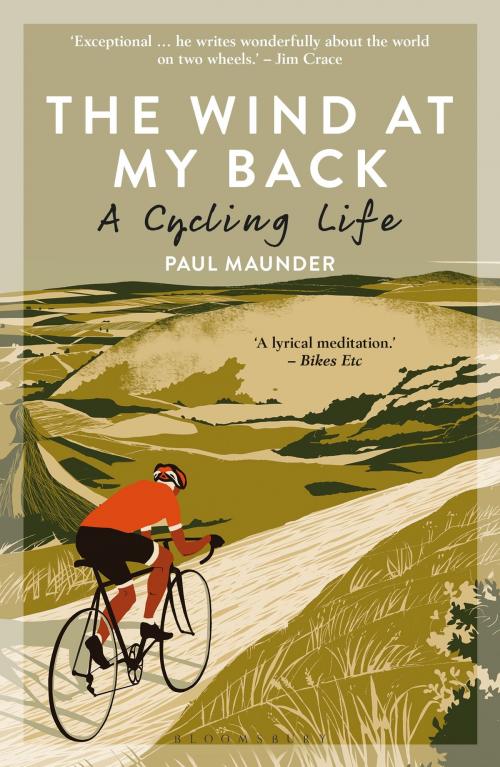The Wind At My Back
A Cycling Life
Nonfiction, Sports, Cycling, Science & Nature, Nature, Biography & Memoir| Author: | Mr. Paul Maunder | ISBN: | 9781472948120 |
| Publisher: | Bloomsbury Publishing | Publication: | May 17, 2018 |
| Imprint: | Bloomsbury Sport | Language: | English |
| Author: | Mr. Paul Maunder |
| ISBN: | 9781472948120 |
| Publisher: | Bloomsbury Publishing |
| Publication: | May 17, 2018 |
| Imprint: | Bloomsbury Sport |
| Language: | English |
A lone cyclist, disappearing into a wild landscape – brave, free, engaged with the world. It's the kind of image that sells bikes, magazines, clothing; a romantic image that all cyclists aspire to. For cycling is an activity deeply and intimately involved with landscape. The bicycle allows us to explore, to engage with wild places, and return in time for dinner. It also allows us to investigate our surroundings closer to home.
It is an activity which, for most of us, happens at a speed that allows a great deal of voyeurism. We peer into houses and shops, gardens and farmyards, fields and hedgerows. What we see may be familiar or alien, but for the creative mind it is always stimulating. Yet – unlike with walking or swimming – the connection between cycling and creativity has only been explored in fragments.
On a bicycle, as one is exposed to sights – new or otherwise, through chance or purposeful searching – the repetitive physical actions of cycling work on the mind in a different way to those of walking. The shape of a long ride can become the shape of a novel; the atmosphere imbued by the weather, the hills, the physical exertion, can all influence a writer's tone. Our memories have a dialogue with the landscape; we remember rides through the landscape, and the landscape shapes our thinking. And for Paul Maunder – a writer all his adult life – cycling and creativity have always been interlinked.
In The Wind on Your Back, Maunder takes a journey from the most dense centres of population to the wild places; starting from cycling in a major city, then moving through suburbia, the edgelands at the periphery of the city, then into the managed and pastoral farmland, and beyond to the sublime mountains.
He explores the experience and history of cycling in these different types of place, and seeks to understand how cycling has played a role in his own creative life as well as that of other cyclist-artists, musicians, photographers, writers and painters. Played out against the backdrop of the British countryside, and drawing of elements of psychogeography and human geography, Maunder seeks to understand the way the outside world interacts with the creative mind, and the way our surroundings help to shape who we are.
A lone cyclist, disappearing into a wild landscape – brave, free, engaged with the world. It's the kind of image that sells bikes, magazines, clothing; a romantic image that all cyclists aspire to. For cycling is an activity deeply and intimately involved with landscape. The bicycle allows us to explore, to engage with wild places, and return in time for dinner. It also allows us to investigate our surroundings closer to home.
It is an activity which, for most of us, happens at a speed that allows a great deal of voyeurism. We peer into houses and shops, gardens and farmyards, fields and hedgerows. What we see may be familiar or alien, but for the creative mind it is always stimulating. Yet – unlike with walking or swimming – the connection between cycling and creativity has only been explored in fragments.
On a bicycle, as one is exposed to sights – new or otherwise, through chance or purposeful searching – the repetitive physical actions of cycling work on the mind in a different way to those of walking. The shape of a long ride can become the shape of a novel; the atmosphere imbued by the weather, the hills, the physical exertion, can all influence a writer's tone. Our memories have a dialogue with the landscape; we remember rides through the landscape, and the landscape shapes our thinking. And for Paul Maunder – a writer all his adult life – cycling and creativity have always been interlinked.
In The Wind on Your Back, Maunder takes a journey from the most dense centres of population to the wild places; starting from cycling in a major city, then moving through suburbia, the edgelands at the periphery of the city, then into the managed and pastoral farmland, and beyond to the sublime mountains.
He explores the experience and history of cycling in these different types of place, and seeks to understand how cycling has played a role in his own creative life as well as that of other cyclist-artists, musicians, photographers, writers and painters. Played out against the backdrop of the British countryside, and drawing of elements of psychogeography and human geography, Maunder seeks to understand the way the outside world interacts with the creative mind, and the way our surroundings help to shape who we are.















